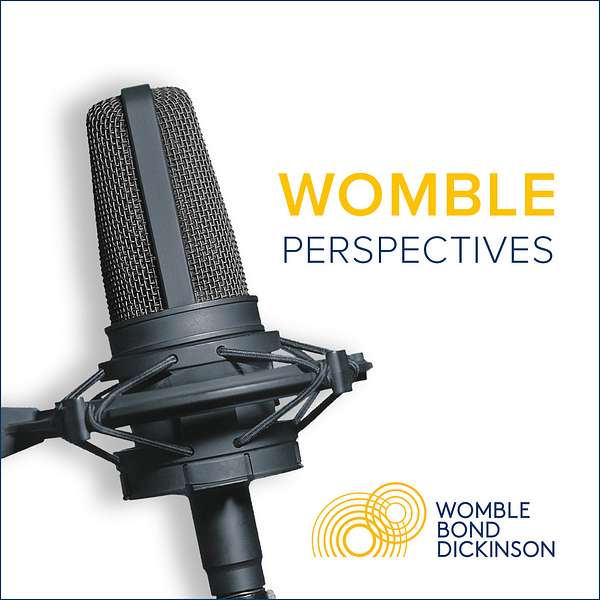
Womble Perspectives
Welcome to Womble Perspectives, where we explore a wide range of topics from the latest legal updates to industry trends to the business of law. Our team of lawyers, professionals and occasional outside guests will take you through the most pressing issues facing businesses today and provide practical and actionable advice to help you navigate the ever-changing legal landscape. With a focus on innovation, collaboration and client service, we are committed to delivering exceptional value to our clients and to the communities we serve.
Womble Perspectives
Patent Pitfalls and Best Practices: What BillJCo Teaches Us
In today’s episode, we’re diving into a pair of Federal Circuit decisions that offer some powerful lessons for patent practitioners—especially when it comes to claim drafting and arguing non-obviousness.
Read the full article
About the authors
Welcome to Womble Perspectives, where we explore a wide range of topics, from the latest legal updates to industry trends to the business of law. Our team of lawyers, professionals and occasional outside guests will take you through the most pressing issues facing businesses today and provide practical and actionable advice to help you navigate the ever changing legal landscape.
With a focus on innovation, collaboration and client service. We are committed to delivering exceptional value to our clients and to the communities we serve. And now our latest episode.
In today’s episode, we’re diving into a pair of Federal Circuit decisions that offer some powerful lessons for patent practitioners—especially when it comes to claim drafting and arguing non-obviousness.
Earlier this year, the Federal Circuit affirmed three inter partes review decisions from the Patent Trial and Appeal Board, holding that all challenged claims in three patents owned by BillJCo, LLC were unpatentable as obvious. The cases centered on two patent families dealing with methods of receiving and presenting information based on user actions, and with mobile device privileges and permissions based on user identity and location.
Let’s unpack what happened—and more importantly, what we can learn.
One of the central issues in these cases was claim construction—specifically, how the court interpreted the term “privilege”. BillJCo argued that “privilege” should be construed to exclude “preferences,” based on distinctions made in the specification. Essentially, they were trying to read in a negative limitation.
Now, negative limitations aren’t inherently problematic. In fact, they can be powerful tools when used intentionally and supported by the specification. But the Federal Circuit reminded us of a key precedent—Omega Engineering v. Raytek Corp.—which says that a negative limitation must be supported either by the express language of the claim or by a clear disclaimer or lexicographic definition in the written description.
In this case, the court found no such support. The specification’s reference to “preferences” and “privileges” as distinct types of user configurations wasn’t enough. There was no express disclaimer, no independent definition—just implication.
This is a cautionary tale. BillJCo likely didn’t anticipate having to argue this construction when the patents were drafted. But their difficulty here underscores the importance of thoughtful drafting.
The second major theme in these decisions was the use of secondary considerations to rebut obviousness. BillJCo leaned on three arguments: copying, commercial success, and licensing.
But the Federal Circuit wasn’t persuaded.
Let’s start with copying. BillJCo alleged that Apple copied its patented technology. But the court found the evidence circumstantial. Mere access to the technology and implementation of similar features isn’t enough. Citing Liqwd v. L’Oréal, the court emphasized that copying requires evidence of duplication based on access. Otherwise, every infringement case would be treated as copying.
Next, commercial success. BillJCo relied on marketing statements about functionality. But again, the court wanted more. Commercial success must be demonstrated through concrete data—sales figures, market share, customer adoption. Without that, the argument falls flat.
Finally, licensing. BillJCo pointed to licensing agreements as evidence of the patents’ value. But the agreements covered more than thirty patents, and there was no evidence showing the importance of the specific patents at issue. The court cited ABT Systems v. Emerson Electric, reinforcing that without a clear nexus to the claimed invention, licensing evidence carries little weight.
These decisions highlight the increasing difficulty of leveraging secondary considerations to rebut a prima facie case of obviousness. They also reinforce the need for robust evidentiary support and strategic claim drafting.
For patent practitioners, the message is clear: precision matters. Whether you’re drafting claims or building a case for non-obviousness, clarity, intentionality, and evidence are your best allies.
Thanks for tuning in to Womble Perspectives. If you found this episode helpful, be sure to subscribe, share, and check out our other episodes.
Thank you for listening to Womble Perspectives. If you want to learn more about the topics discussed in this episode, please visit The Show Notes, where you can find links to related resources mentioned today. The Show Notes also have more information about our attorneys who provided today's insights, including ways to reach out to them.
Don't forget to subscribe via your podcast player of choice so that you never miss an episode. Thank you again for listening.